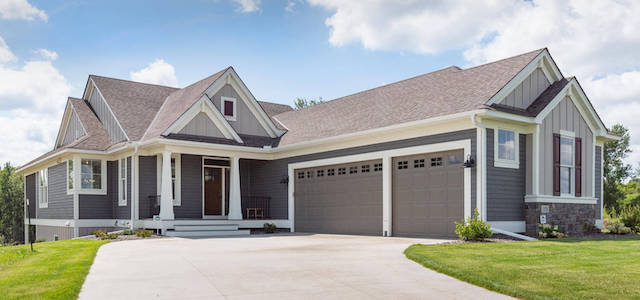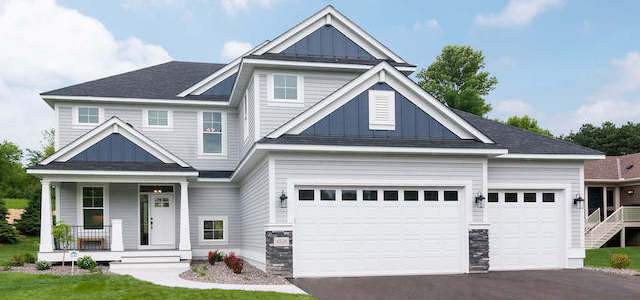According to the National Association of Home Builders, housing affordability has shown a slight uptick in the first quarter. Even though mortgage rates have increased, wages have risen a bit and homes prices are stable.
(NAHB) – Housing Affordability Registers Slight Uptick in First Quarter
Rising wages and moderating home prices offset a rise in mortgage interest rates to give housing affordability a slight boost in the first quarter of 2017, according to the National Association of Home Builders (NAHB)/Wells Fargo Housing Opportunity Index (HOI) released today.
“Builders are reporting confidence and solid traffic in many markets across the nation even as they continue to grapple with nagging headwinds,” said NAHB Chairman Granger MacDonald, a home builder and developer from Kerrville, Texas. “Regulatory constraints, trade barriers on Canadian softwood lumber, and persistent shortages of lots and labor are slowing the pace of the housing recovery.”
“Ongoing job growth continues to fuel demand for housing, while wage growth is helping to offset the effects of rising mortgage rates and keep home prices affordable,” said NAHB Chief Economist Robert Dietz. “NAHB anticipates that housing will continue on a gradual, upward path throughout the year.”
In all, 60.3 percent of new and existing homes sold between the beginning of January and end of March were affordable to families earning the U.S. median income of $68,000. This is up from the 59.9 percent of homes sold that were affordable to median-income earners in the fourth quarter.
The national median home price fell to $245,000 in the first quarter from $250,000 in the final quarter of 2016. Meanwhile, average mortgage rates rose nearly half a point from 3.84 percent in the fourth quarter to 4.33 percent in the first quarter.
For the second straight quarter, Youngstown-Warren-Boardman, Ohio-Pa., was rated the nation’s most affordable major housing market. There, 92.7 percent of all new and existing homes sold in the first quarter were affordable to families earning the area’s median income of $54,600. Meanwhile, Kokomo, Ind., was rated the nation’s most affordable smaller market, with 96.3 percent of homes sold in the first quarter being affordable to families earning the median income of $62,500.
Rounding out the top five affordable major housing markets in respective order were Elgin, Ill.; Scranton-Wilkes Barre-Hazleton, Pa.; Buffalo-Cheektowaga-Niagara Falls, N.Y.; and Syracuse, N.Y.
Smaller markets joining Kokomo at the top of the list included Glen Falls, N.Y.; East Stroudsburg, Pa.; Binghamton, N.Y.; and Lansing-East Lansing, Mich.
For the 18th consecutive quarter, San Francisco-Redwood City-South San Francisco, Calif., was the nation’s least affordable major housing market. There, just 11.8 percent of homes sold in the first quarter were affordable to families earning the area’s median income of $108,400.
Other major metros at the bottom of the affordability chart were located in California. In descending order, they included Los Angeles-Long Beach-Glendale; Anaheim-Santa Ana-Irvine; San Diego-Carlsbad; and San Jose-Sunnyvale-Santa Clara (tied with San Diego).
All five least affordable small housing markets were also in California. At the very bottom of the affordability chart was Salinas, where 13.8 percent of all new and existing homes sold were affordable to families earning the area’s median income of $63,100.
In descending order, other small markets at the lowest end of the affordability scale included Santa Cruz-Watsonville; Napa; San Luis Obispo-Paso Robles-Arroyo Grande; and San Rafael.
Please visit www.nahb.org/hoi for tables, historic data and details.
Editor’s Note: The NAHB/Wells Fargo Housing Opportunity Index (HOI) is a measure of the percentage of homes sold in a given area that are affordable to families earning the area’s median income during a specific quarter. Prices of new and existing homes sold are collected from actual court records by Core Logic, a data and analytics company. Mortgage financing conditions incorporate interest rates on fixed- and adjustable-rate loans reported by the Federal Housing Finance Agency.
The NAHB/Wells Fargo HOI is strictly the product of NAHB Economics, and is not seen or influenced by any outside party prior to being released to the public.











































